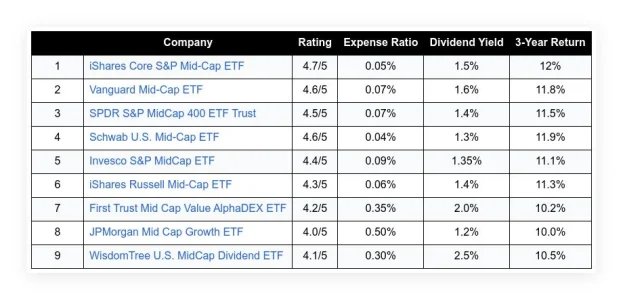Retirement advice articles often focus on accumulating a specific nominal amount of wealth, then controlling expenses so that you never outlive your proceeds. These are valuable points of consideration, but they neglect another important aspect of retirement planning: liquidity and cash management.
How much liquidity do you really need in retirement and how should you consider liquidity across your investments?
Table of Contents
ToggleThe Liquidity Problem for Retirees
First, what exactly is liquidity and why is it so important for retirees to consider?
Liquidity is a measure of how easy it is to “liquidate” a given asset or investment. In other words, the more liquid an investment is, the easier it is to convert to cash and start spending. Cash is perhaps the best example of liquidity because it’s the ultimate liquid asset. It’s already cash, which can be spent practically anywhere, so it requires no immediate conversion. Functionally, any money you have sitting in savings and checking accounts qualifies as cash.
Certain assets are highly illiquid, meaning they can’t be converted to cash easily. If you have minimal needs for cash, this isn’t much of a problem. You can maintain these assets, building your net worth or capitalizing on other benefits, while relying on cash and liquid assets for everyday needs.
As you approach retirement, you’ll probably have a sizable net worth to work with. Depending on the diversification of your portfolio, you may have many different assets available. On top of maintaining diversification for the purposes of maximizing returns, stabilizing returns, and reducing risk, diversification can help you achieve the ideal level of liquidity.
If your portfolio isn’t liquid enough, you may struggle to generate the cash you need for daily expenses, ultimately taking on more debt or otherwise introducing financial stress to your life. If your portfolio is too liquid, however, you’ll miss out on some of the benefits of holding assets that are less liquid.
As a simple example, real estate is considered to be a relatively illiquid asset, but real estate has many benefits as an investment asset, such as capitalizing on financial leverage, serving practical purposes in your life, and hedging against the stock market.
Examples of Illiquid Assets
These are examples of assets that are generally considered to be illiquid:
Real Estate
If you’ve ever sold a house, you know how stressful and time-consuming it can be. It often takes days to weeks of preparation just to get a property ready for sale. Even when the property is perfectly ready, it could take weeks or even months before you find an acceptable buyer. In fact, many sellers are forced to lower their prices to make sure the transaction is closed in a reasonable amount of time.
Cryptocurrency
For starters, cryptocurrency is designed to function as a currency, much like cash, but there’s a critical issue. Cryptocurrency isn’t legal everywhere, nor is it accepted everywhere. Niche and new cryptocurrencies tend to be very illiquid because they can’t be spent in many places, and there isn’t much of an audience to buy or sell them on an open market. That said, some types of crypto are more popularly traded than others. Ethereum, for example, in addition to holding a favorable USD value (which you can check here: ETH to USD), has a market cap of nearly half a trillion dollars – and a 24-hour trading volume of more than $18 billion.
Fine Art, Antiques, and Collectibles
Many investors who pour money into things like fine art, antiques, and collectibles do so out of love for these objects more than a desire for a specific return. However, we still need to identify them as illiquid assets. Finding a seller for a specific antique stamp or rare coin isn’t always easy, especially if you don’t want to take a loss on the sale.
Private Equity
Private equity can work out massively in your favor if you invest in the right company. Generally, private equity stakes are hard to sell. However, the liquidity of your position depends tremendously on its value, the visibility of the company, and market factors.
Hedge Funds
Similarly, it’s not always easy or straightforward to pull money out of a hedge fund. While hedge funds are more liquid than, say, a piece of fine art, they’re less liquid than mutual funds and ETFs.
Penny Stocks
Penny stocks are cheap, relatively unpopular stocks with low market cap and low trading volume. Investors generally consider penny stocks to be very high risk and potentially high reward, but many savvy investors stay away from them altogether because of how volatile and unpredictable they are. It’s not uncommon to be stuck with shares of penny stocks that are practically impossible to sell, making them extremely illiquid.
Keep in mind that not all assets within a category are equally illiquid.
Examples of Liquid Assets
These are examples of assets that are generally considered to be liquid:
Cash
Cash is king in the realm of liquidity. Since it requires no liquidation, it’s the ultimate liquid asset.
Money Market Accounts
Money market accounts are the next best thing. This is a specific type of savings account with a high interest rate, which financial institutions offer in exchange for certain conditions, like a minimum balance requirement or ongoing fees.
CDs
Certificates of deposit, or CDs, are extremely safe, predictable accounts with higher interest rates than traditional savings accounts. However, during the term of your CD, you may not have direct access to your money without penalty.
Large Cap Stocks
Shares of large cap stocks, which are both valuable and popular, are considered quite liquid. With the click of a button, you can sell shares of most large cap stocks in mere seconds.
Index Funds and Mutual Funds
Similarly, most index funds and mutual funds are relatively liquid. ETFs can be bought and sold much like stocks, though mutual funds sometimes have limitations in place – so read the fine print carefully.
Keep in mind that not all assets within a category are equally liquid.
Determining Your Liquidity Needs
As we’ve established, liquidity is an important consideration, but how exactly should you consider it in your portfolio and in your retirement? In other words, how are you supposed to determine your specific liquidity needs?
Take the following factors into consideration:
Total Assets
One of the most important considerations is your total net worth. If you plan on retiring with a meager $50,000 of assets (which we don’t advise), you’ll probably want most of your holdings to be as liquid and readily available as possible. Conversely, if you have a net worth of $50 million, liquidity isn’t much of a concern; you’ll need to raise cash for recurring expenses of course, but even a small fraction of your portfolio in liquid holdings should be sufficient. Plus, even if you run out of cash on hand, you can afford to take a small loss on selling one of your illiquid assets.
Current Portfolio Balance
Next, think about your current portfolio balance. Real estate is considered illiquid, but if you’re a property management expert and most of your portfolio is held in very valuable rental properties, you may be reluctant to rebalance your portfolio in favor of liquidity. Liquidity is an important factor in managing a financially successful retirement, but it’s certainly not the only factor you need to keep in mind. Also, if you already have a portfolio that has a nice mix of liquid and illiquid assets, you may not need to make any adjustments at all.
Recurring Expenses
Estimating expenses in retirement can be challenging, but it’s something you’ll have to do if you want to estimate appropriate levels of liquidity. Even illiquid assets can generally be liquidated over a long enough time horizon. For example, if you decide to sell a piece of fine art, you’ll likely be able to find a buyer willing to pay a fair price within a year, if not a few months.
Accordingly, you may want to hold a value of highly liquid assets roughly equivalent to six months of living expenses. This way, you can feel confident that several months of regular expenses are covered, and if you begin to experience any financial distress, you’ll have plenty of time to reallocate away from illiquid assets.
Potential for Emergency Expenses
Of course, you’ll also need to consider the potential for emergency expenses as well. A sudden and unforeseeable medical bill could cause ripples through your entire financial strategy. For this reason, it’s a good idea to keep a separate emergency fund in cash at all times. Think of it as an extra layer of financial protection to insulate you from potential catastrophes.
Personal Risk Tolerance
Everyone enters retirement with a unique set of circumstances and a unique mindset. Your personal risk tolerance may be very different from the risk tolerance of your peers. You may feel very comfortable keeping most of your portfolio in illiquid assets, or you may prefer the comfort and security of a portfolio that tips in the favor of liquidity.
Evaluating Liquidity of an Asset
As we’ve established, individual choices within broad asset classes can make a big impact on your portfolio liquidity. Because of this, it’s important to have the knowledge and tools you need to evaluate liquidity on a case-by-case basis.
Some of the most important factors to consider include:
Market Cap
Market capitalization is a measure of the total dollar value of a company’s outstanding shares of stock. It’s a way of determining how big and popular a company is. Generally speaking, the bigger the market cap, the more liquid the stock or fund is going to be.
Price
That said, higher numbers aren’t always a good indicator. In the real estate world, there’s naturally a lower demand associated with more expensive properties. This is because only a small number of people can afford a $15 million property, while most people could easily afford a property worth only $30,000. Accordingly, more expensive assets are, in many cases, less liquid.
Trading Volume
In the stock market, trading volume refers to the number of shares bought and sold over a given period of time (often a day). This number does fluctuate, but it can give you a good indication of how easy it will be to sell shares of this stock. In other contexts, you can look at sale patterns to determine the relative ease of liquidating an asset. For example, if you own property in a specific neighborhood, you can look at how long recently sold houses from that neighborhood were on the market.
Popularity/Demand
More popular assets tend to be more liquid. When demand is high, it’s not hard to find a buyer. Blue chip stocks and rental properties in popular neighborhoods are much more liquid than, say, a novel cryptocurrency that just released – or niche trading cards from a sci-fi show that was canceled in the 1990s.
Tangibility
Tangible, physical assets often take longer to sell, partially due to the logistics involved with facilitating such a transaction. Selling a share of stock happens digitally and instantaneously. And, both parties involved can facilitate the transaction, even if they’re on opposite sides of the world. Selling a car or a bar of gold requires one or more parties to travel, ship, conduct inspections, and partake in more time-consuming activities.
Practical Value
The practical value of the asset can also affect liquidity. Assets that are inherently more pragmatic tend to be more liquid than less pragmatic assets. While rental properties and works of art are both considered relatively illiquid, rental properties are more liquid because of how functional they are. A physical property can function as a living space or as a means of generating cash, while the work of art is, at best, going to look pretty on your wall.
Finding the Right Portfolio Balance
Liquidity isn’t the simplest financial topic, but it is a vital one if you want to stay financially healthy in retirement. With a bit of research, introspection, and thoughtful portfolio rebalancing, you can manage the appropriate level of liquidity in your portfolio without sacrificing all the benefits that illiquid assets have to offer.
















